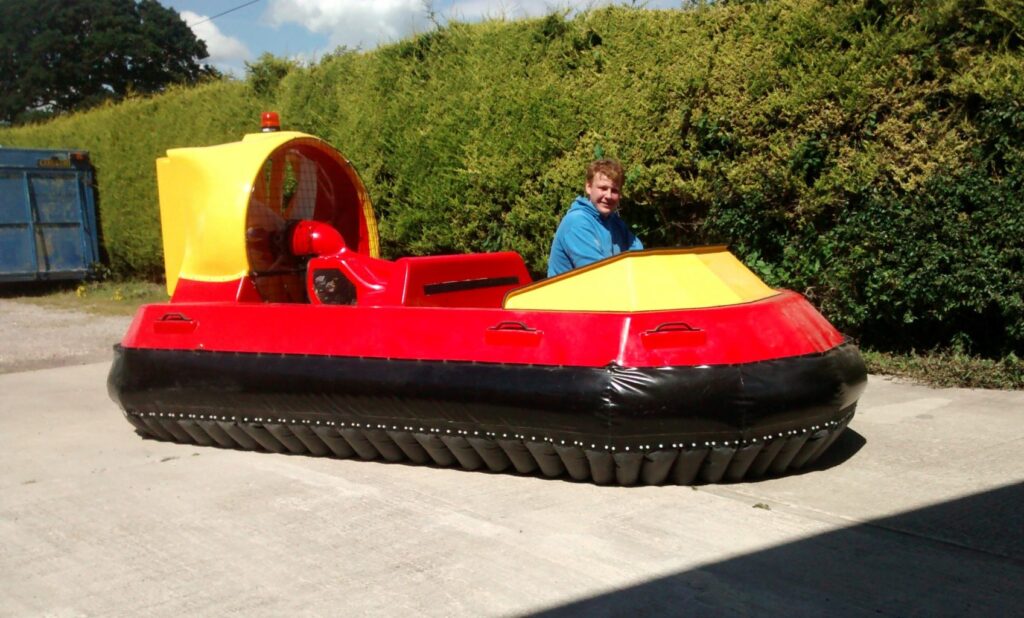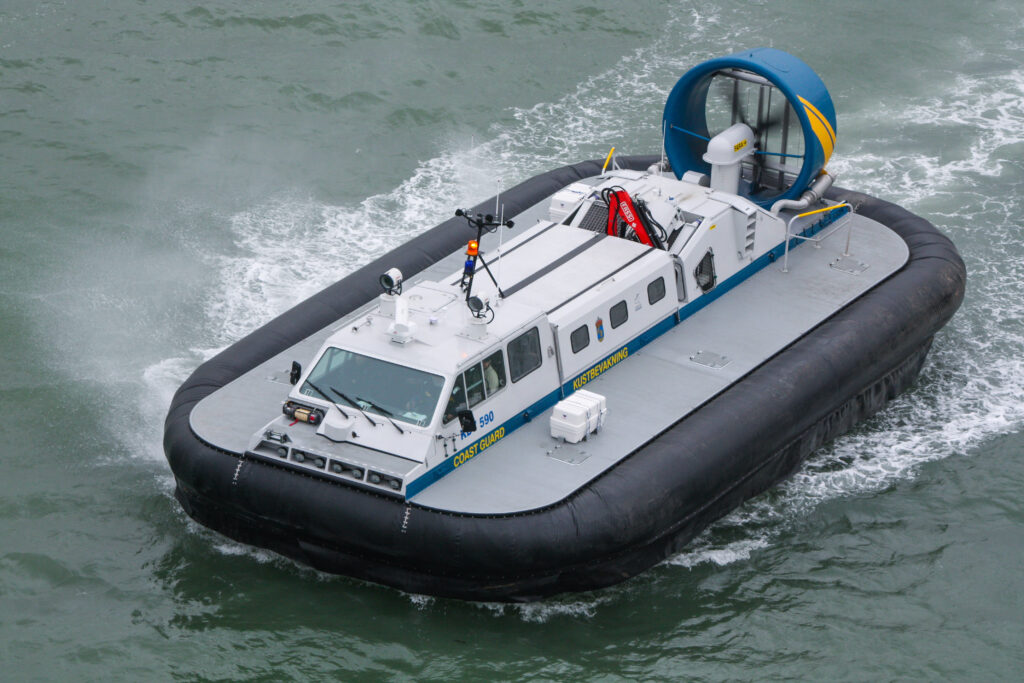There’s a clever vehicle you can ride in and even, if you want, own and drive yourself. It doesn’t have wheels. No tank treads either. It doesn’t float in water. It doesn’t fly. But despite all that it can travel over any terrain and over water. And the very first one was made out of a vacuum cleaner and tin cans. As you’ve probably guessed by now, it’s the hovercraft, and it was invented by Christopher Cockerell. He was born June 4, 1910 in Cambridge, England.
Cockerell started out his career as a radio and electronics engineer, and in the 1930s and 40s worked on the high tech of the time, including radio communications, radio direction finders, and radar. Then he changed direction and bought a small company that made boats and travel trailers. His boats weren’t any different than anybody else’s boats, and he started thinking that he might sell more if his boats were the fastest. He discovered that a past experiment by the Thornycroft company (another small boat builder) had explored increasing the speed of boats by using an engine to raise them partly out of the water. Contact with the water produces drag (for a boat), so the less contact there is, the faster you can go with the same amount of thrust.
Cockerel came up with the idea of channeling air so it would be partially trapped under the boat, and the cushion of air might support the whole thing. He tried it out with a vacuum cleaner and tin cans, and it worked — but it wasn’t yet anything practical. It took him several years to come up with a working model, and he filed for a patent in 1955. But then he had a problem. His invention wasn’t really a boat, so the shipbuilding industry wasn’t interested in investing. It didn’t fly, exactly, so the airplane industry wasn’t interested. So he went to the government to see if they’d be interested in funding development as a military project. That turned out to be another mistake; the government wasn’t interested either, but declared the whole thing a secret anyway. That left Cockerell with no investors, and unable to tell anybody about his new idea.
The hovercraft was declassified in 1958, and the National Research Development Corporation (the NRDC, a government research group in England) ordered the first full-size version. It was finished in 1959, and on July 25 of that year crossed the English Channel to France. It was the 50th anniversary of the first channel crossing by an airplane. It caused quite a stir, and the NRDC founded Hovercraft Development, Ltd. Cockerell became the technical director, and before long there was a hovercraft industry beside the shipping and airplane industries that had missed their chance.
Cockerell won a raft of engineering and scientific awards, and the hovercraft is not his only invention. One that may yet be heard from is the Cockerell Raft, which generates electricity from ocean waves. He only received five thousand pounds from the government for his invention, but they did grant him a knighthood, and in 1972 named one of the English Channel hovercraft ferries the Sir Christopher. If you visit the Lowestoft Maritime Museum in Suffolk, England, you can see Cockerell’s workshop, which was preserved and moved after his death in 1999.


